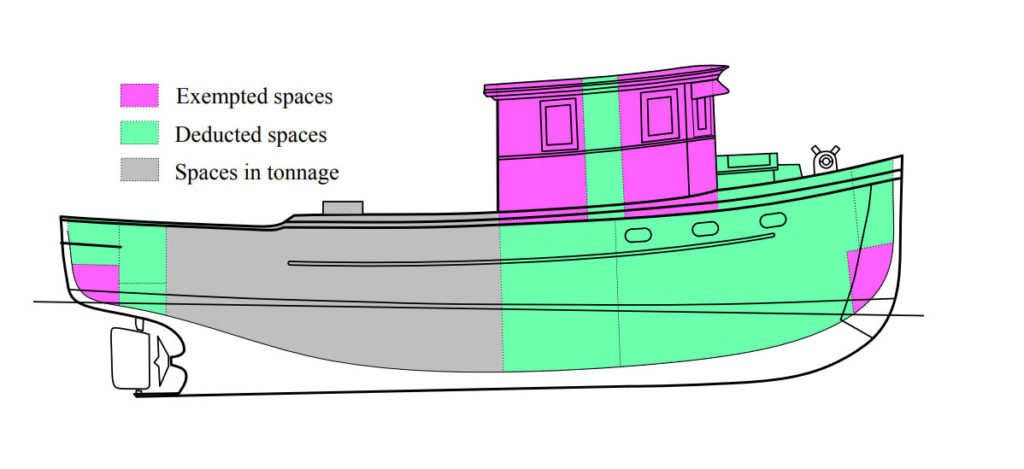Net tonnage is a volumetric measure of a vessel’s useful capacity, for which a number of different measurement systems are in use worldwide. U.S. law requires tonnage measurement for any vessel for which the application of a U.S. law depends on the vessel’s tonnage. Owners of U.S. vessels less than 79 feet in length may choose measurement under one of two older U.S. Formal Measurement Systems (the Standard or Dual Regulatory Measurement Systems), or the U.S. Simplified Regulatory Measurement System. The U.S. tonnage measurement program is administered by the Coast Guard Marine Safety Center (MSC).

How do the measurement systems differ?
Formal (Standard or Dual) measurement involves the calculation of net tonnage using a complex series of measurements, exemptions and deductions, and is performed by an authorized measurement organization for a substantive fee paid by the vessel owner. Simplified measurement involves the calculation of net tonnage using a simplified formula, with owner-provided principal dimensions and other characteristics as the inputs. While taken as a group, the resulting net tonnages are comparable between formally and simplified measured vessels, the tonnage differences may vary significantly for individual vessels.
How is net tonnage certified?
This depends on how the vessel is measured. For formally measured vessels, the measurement organization certifies the net tonnage through issuance of a tonnage certificate. For simplified measured vessels, no comparable document is issued (excepting certain novel craft, for which the Coast Guard will issue a tonnage certificate). Instead, a completed Application for Simplified Measurement (form CG-5397) or, for documented vessels, a Builder’s Certification (form CG-1261) serves as evidence of the measurement of the vessel, from which the net tonnage may be calculated by interested parties.
Origins of Tonnage
The present concept of tonnage measurement dates back at least to the early middle ages. Tonnage duties were assessed on uns (casks or barrels) of wine. Each tun held approximately 252 gallons of wine, weighing 2240 pounds, from which we get the “long ton” measure of weight.
By the late 1700’s, systems were in place in Europe to assign tonnages to reflect vessel carrying capacity in “tons” of roughly 100 cubic feet each (a measure of volume related to the size of a standardized cask or barrel).
Using tonnage for tax purposes is addressed in the United States Constitution, and was the subject of the 3rd and 5th Acts of the First Congress.
